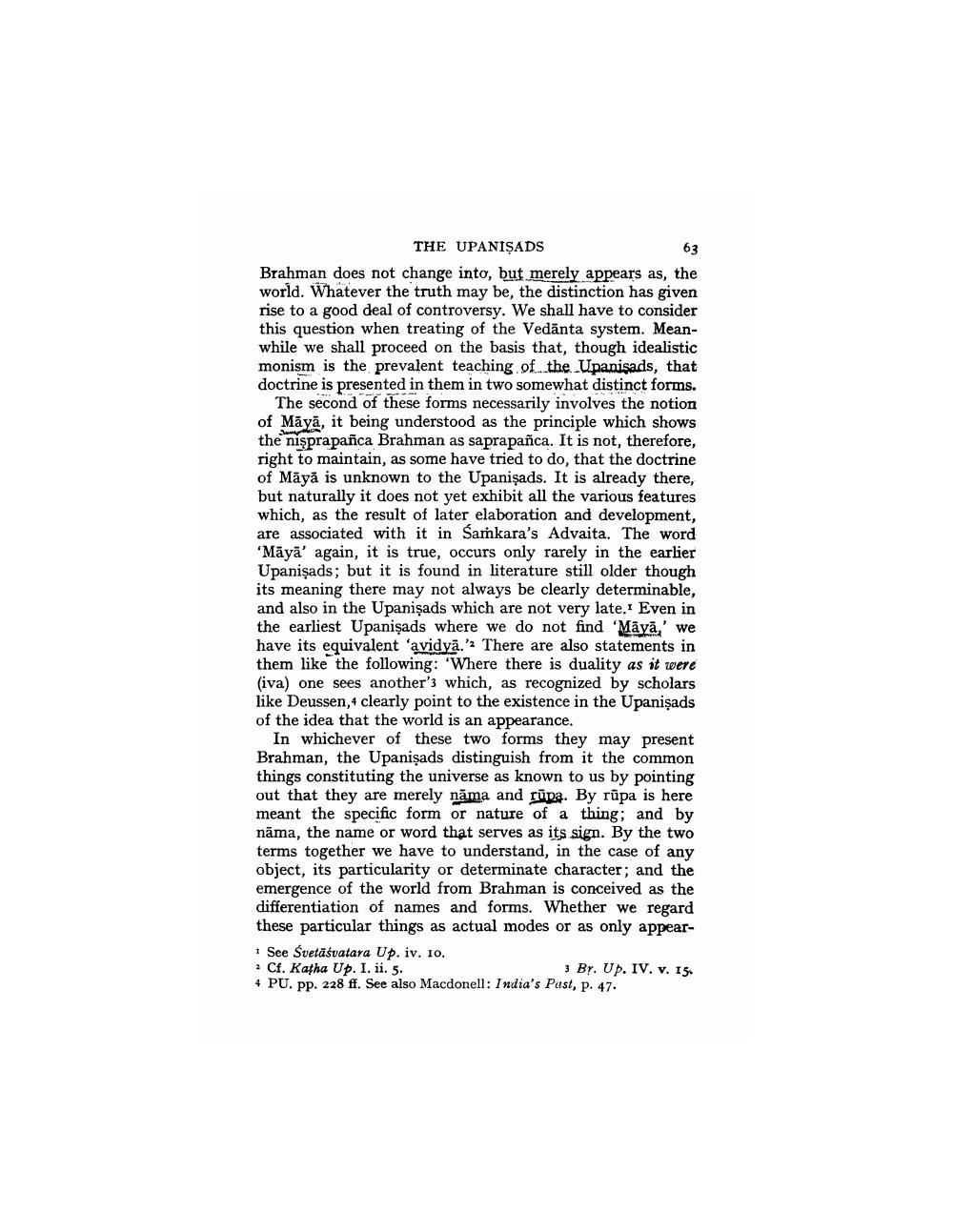________________
63
THE UPANIŞADS Brahman does not change into, but merely appears as, the world. Whatever the truth may be, the distinction has given rise to a good deal of controversy. We shall have to consider this question when treating of the Vedānta system. Meanwhile we shall proceed on the basis that, though idealistic monism is the prevalent teaching of the Upanişads, that doctrine is presented in them in two somewhat distinct forms.
The second of these forms necessarily involves the notion of Māyā, it being understood as the principle which shows the nişprapanca Brahman as saprapanca. It is not, therefore, right to maintain, as some have tried to do, that the doctrine of Māyā is unknown to the Upanişads. It is already there, but naturally it does not yet exhibit all the various features which, as the result of later elaboration and development, are associated with it in Saṁkara's Advaita. The word "Māyā' again, it is true, occurs only rarely in the earlier Upanişads; but it is found in literature still older though its meaning there may not always be clearly determinable, and also in the Upanişads which are not very late. Even in the earliest Upanişads where we do not find 'Māyā.' we have its equivalent 'avidyā.'? There are also statements in them like the following: 'Where there is duality as it were (iva) one sees another'3 which, as recognized by scholars like Deussen,4 clearly point to the existence in the Upanişads of the idea that the world is an appearance.
In whichever of these two forms they may present Brahman, the Upanişads distinguish from it the common things constituting the universe as known to us by pointing out that they are merely nāma and rūpa. By rüpa is here meant the specific form or nature of a thing; and by nāma, the name or word that serves as its sign. By the two terms together we have to understand, in the case of any object, its particularity or determinate character; and the emergence of the world from Brahman is conceived as the differentiation of names and forms. Whether we regard these particular things as actual modes or as only appear
See Svetāśvatara Up. iv. 10. . Cf. Katha Up. I. ii. 5.
3 By. Up. IV. v. 15. 4 PU. pp. 228 ff. See also Macdonell: India's Past, P. 47.




